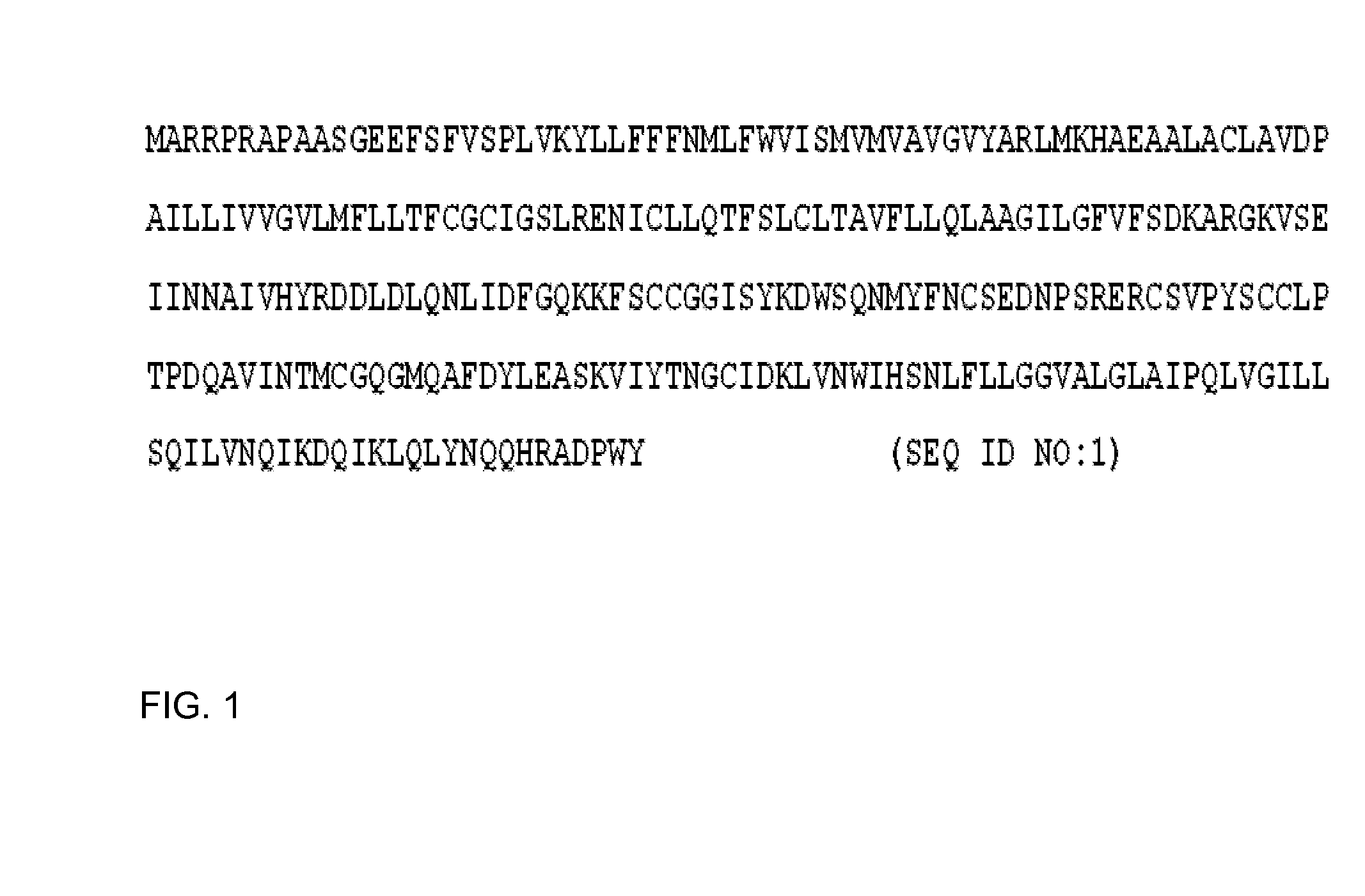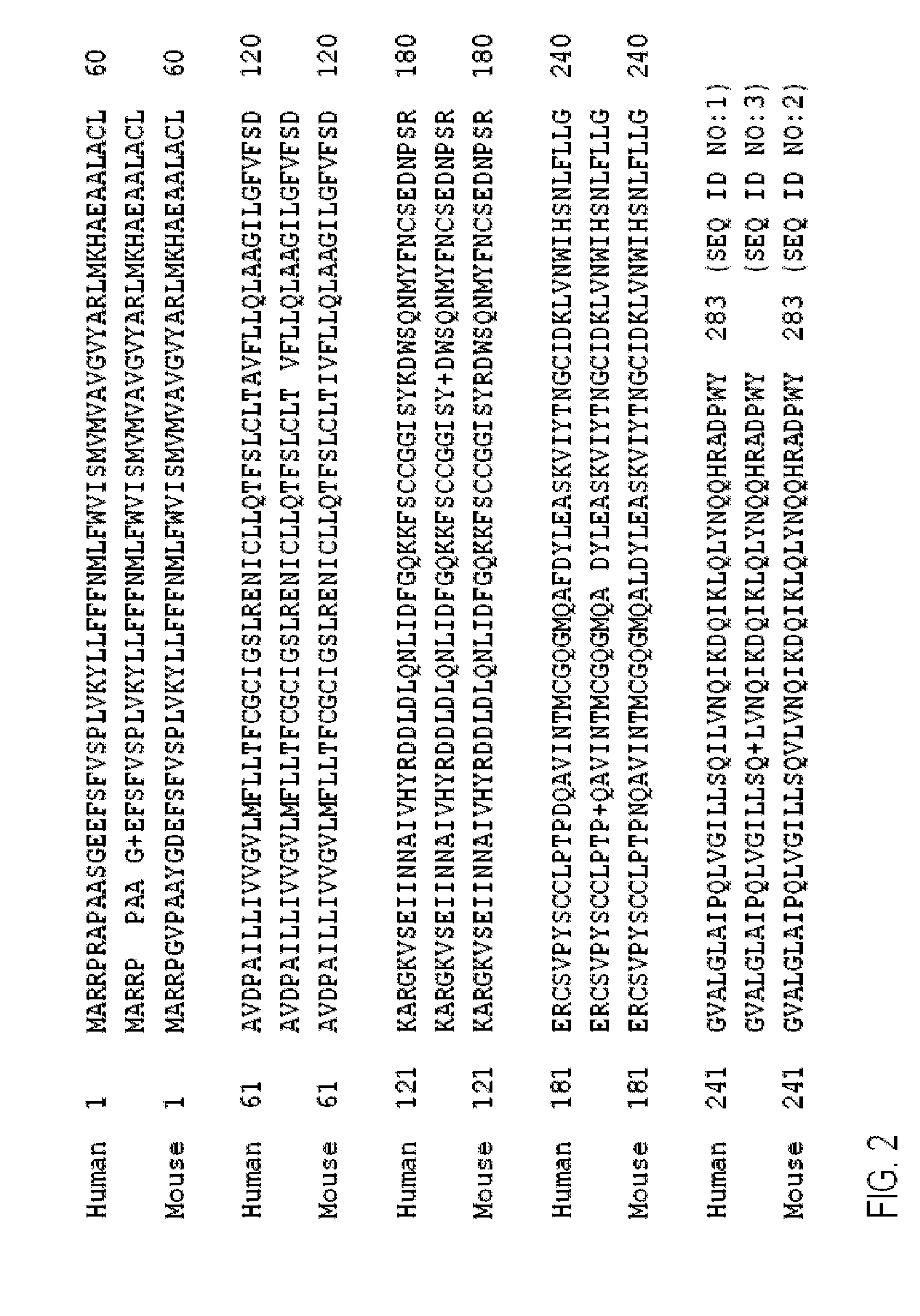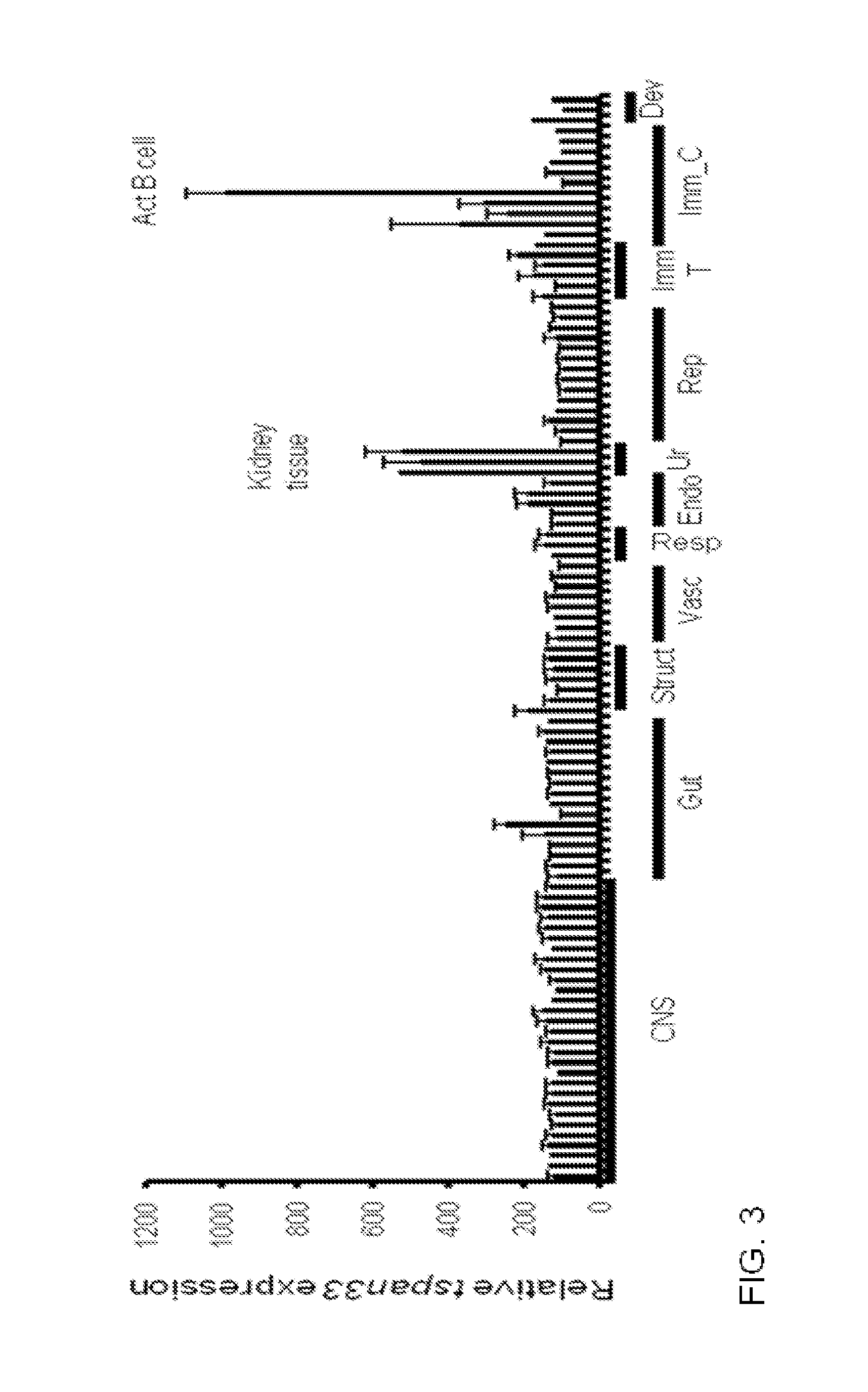Tspan 33 is a candidate for antibody targeted therapy for the treatment of b cell hodgkin lymphomas
a technology of tspan33 and b-cell hodgkin lymphoma, which is applied in the field of protein tspan33, can solve the problems of serious side effects and modification of the fate of tumor cells, and achieve the effect of reducing the number of tspan33+ b-cells
- Summary
- Abstract
- Description
- Claims
- Application Information
AI Technical Summary
Benefits of technology
Problems solved by technology
Method used
Image
Examples
example 1
[0125]We have identified Tspan33 as a gene encoding a transmembrane protein exhibiting a restricted expression pattern including expression in activated B cells. TSPAN33 is a member of the tetraspanin family. TSPAN33 is not expressed in resting B cells, but is strongly induced in primary human B cells following activation. Human 2E2 cells, a Burkitt's lymphoma-derived B cell model of activation and differentiation, also upregulate TSPAN33 upon activation. TSPAN33 is expressed in several lymphomas including Hodgkin's and Diffuse large B Cell Lymphoma. TSPAN33 is also expressed in some autoimmune diseases where B cells participate in the pathology, including rheumatoid arthritis patients, systemic lupus erythematosus (SLE), and in spleen B cells from MRL / Faslpr / lpr mice (a mouse model of SLE). We conclude that TSPAN33 may be used as a diagnostic biomarker or as a target for therapeutic antibodies for treatment of certain B cell lymphomas or autoimmune diseases.
[0126]Abbreviations used...
example 2
Introduction
[0127]The discovery and characterization of lineage specific markers has been instrumental for the identification of cell subsets that underlie the complexity of the immune system. Cell surface markers, such as CDR (pan T cell marker), CD4 (helper T cells), CD8 (cytotoxic T cells), and B220 / CD45R (B cells), are routinely used to differentiate lymphocyte populations [1-2]. Advances in flow cytometry labeling techniques led to the characterization of CD4 subtypes (Th1, Th2, Th17 and Treg cells) based on the detection of lineage-specific transcription factors [3]. The discovery of regulatory ‘B10 cells’ was based on the identification of a small subset of B cells that are CD1dhiCD5+ and secrete IL-10 [4-6]. In addition, lineage specific surface markers (such as the B cell marker CD20), represent useful targets for the development of therapeutic mAbs that have proven effective against various lymphomas as well as autoimmune diseases like Rheumatoid Arthritis (RA1) through th...
example 3
Methods
Microarray Analyses
[0131]The generation of the Body Index of Gene Expression database (BIGE) has been described [9-10]. Briefly, total RNAs were obtained from 4 male and 4 female human donors, between 3-5 hours post-mortem or augmented with commercially available human tissue RNAs (Clontech, Palo Alto, Calif.). Genome-wide gene expression data was obtained using Affymetrix Human Genome U133 Plus 2.0 gene arrays (Affymetrix, Santa Clara, Calif.) and data normalization, and summarization were done in ArrayAssist software (Iobion Labs, La Jolla, Calif.).
qRT-PCR
[0132]RNA was isolated from human cell lines / cells or tissue using the QiagenRNeasy® kit according to the manufacturer's instructions (Qiagen, CA). The RNA was converted to cDNA using the QuantiTect® Reverse Transcription (Qiagen, CA). qPCR was performed using the Roche LightCycler® 480 Real-Time PCR system with probes designed to detect TSPAN33, CD19, CD20, CD138 and GAPDH (Roche, Pleasanton, Calif.). Primers for TSPAN33 ...
PUM
| Property | Measurement | Unit |
|---|---|---|
| cell surface | aaaaa | aaaaa |
| time | aaaaa | aaaaa |
| fluorescence | aaaaa | aaaaa |
Abstract
Description
Claims
Application Information
 Login to View More
Login to View More - R&D
- Intellectual Property
- Life Sciences
- Materials
- Tech Scout
- Unparalleled Data Quality
- Higher Quality Content
- 60% Fewer Hallucinations
Browse by: Latest US Patents, China's latest patents, Technical Efficacy Thesaurus, Application Domain, Technology Topic, Popular Technical Reports.
© 2025 PatSnap. All rights reserved.Legal|Privacy policy|Modern Slavery Act Transparency Statement|Sitemap|About US| Contact US: help@patsnap.com



